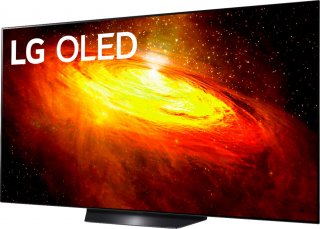LG’s BX Series Offers Affordable Entry Into OLED HDTVs (With a Catch)
LG's OS is not exactly the best.
In the premium HDTV market, LG’s OLED offerings are indeed the cream of the crop.
If you’re in the market for fantastic picture quality, accurate colors, wide-angle viewing, deepest blacks and inimitable uniformity and contrast levels, look no further than the sets manufactured by the Korean tech giant.
The caveat is that these highly regarded panels don’t come cheap. If you’re looking to purchase a 65-inch-plus model, you’ll likely be set back at least two or three grand.
Fortunately, more affordable choices are on the way. LG’s BX Series fits perfectly into that profile, as the 55-inch model is now going for $1,600 and the 65-incher $2,300.
Yes, you can choose to get the B9 Series for $300 cheaper, but the BX definitely packs more punch and you’ll be partly future-proofing as well. You can be confident that the BX will be relevant in your living room for years to come.
The BX models are a tier below LG’s CX, GX and WX 4K OLED ranges for this year, but that fact alone shouldn’t make you shy away from committing. Know that the 48-inch CX model is retailing for a hundred dollars cheaper at $1,500, but you’ll also be sacrificing seven inches on the screen’s size.
It is powered by last year’s Alpha 7 Gen 3 Intelligent Processor, which isn’t as robust as the Alpha 9 chip found in other pricier models—but the overall picture and sound quality isn’t lacking in any way.
The BX also boasts Dolby Vision, Dolby Atmos and Filmmaker Mode, which does a wonderful job in disabling any annoying soap-opera effects. And if you’re a diehard gamer, you will be pleased to know that Nvidia G-Sync will surely ramp up your immersive gaming experience.
Perhaps the biggest shortcoming of the BX is the webOS smart platform. Much like Samsung’s Tizen operating system, LG’s version is surely still a work in progress. Yes, it has a pleasant, stripped-down user interface, which hasn’t changed much since it launched, but it really lacks what’s needed for today’s data-intensive streaming TV world.
And don’t forget that all OLED TVs have that slight chance of suffering from burn-in and image retention, which can occur when static image elements have “worn out” certain areas of an OLED screen’s organic materials faster than the rest of the screen.
Ethen Kim Lieser is a Minneapolis-based Science and Tech Editor who has held posts at Google, The Korea Herald, Lincoln Journal Star, AsianWeek and Arirang TV. Follow or contact him on LinkedIn.

